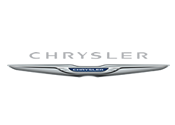Diesel particulate filters For The Main Car Brands
The diesel particulate filter is an emissions control device integrated in the exhaust system that removes the diesel particulates produced by diesel engines.
Our wide range of catalytic converters covers the needs for owners of all car brands, with the best price on the European market and express deliveries.
If you have any doubt regarding what a DPF is or how does a DPF works, please refer to our help center or contact us.
-

Diesel particulate filters
ALFA ROMEO
-

Diesel particulate filters
AUDI
-

Diesel particulate filters
BMW
-

Diesel particulate filters
BMW-MINI
-

Diesel particulate filters
CHEVROLET
-

Diesel particulate filters
CHRYSLER
-

Diesel particulate filters
CHRYSLER JEEP
-

Diesel particulate filters
CITROËN
-

Diesel particulate filters
CUPRA
-

Diesel particulate filters
DACIA
-

Diesel particulate filters
DODGE
-

Diesel particulate filters
DS
-

Diesel particulate filters
FIAT
-

Diesel particulate filters
FORD
-

Diesel particulate filters
HONDA
-

Diesel particulate filters
HYUNDAI
-

Diesel particulate filters
INFINITY
-

Diesel particulate filters
IVECO
-

Diesel particulate filters
JAGUAR
-

Diesel particulate filters
KIA
-

Diesel particulate filters
LANCIA
-

Diesel particulate filters
LAND ROVER
-

Diesel particulate filters
LEXUS
-

Diesel particulate filters
MAZDA
-

Diesel particulate filters
MERCEDES
-

Diesel particulate filters
MITSUBISHI
-

Diesel particulate filters
NISSAN
-

Diesel particulate filters
OPEL
-

Diesel particulate filters
PEUGEOT
-

Diesel particulate filters
PORSCHE
-

Diesel particulate filters
RENAULT
-

Diesel particulate filters
SAAB
-

Diesel particulate filters
SEAT
-

Diesel particulate filters
SKODA
-

Diesel particulate filters
SUBARU
-

Diesel particulate filters
SUZUKI
-

Diesel particulate filters
TOYOTA
-

Diesel particulate filters
VOLKSWAGEN
-

Diesel particulate filters
VOLVO
¿Qué es un filtro de partículas?
Los filtros de partículas son uno de los principales elementos con los que cuentan los fabricantes de vehículos para conseguir que cumplan los límites establecidos por la normativa de emisiones. A pesar de los avances en la eficiencia de los motores, incluso hoy en día no es raro ver algunos vehículos de cuyo tubo de escape salen auténticos nubarrones negros, sobre todo al dar acelerones bruscos. Ese humo es señal de una combustión poco eficiente, que deja muchos residuos.
Los gases contaminantes como el monóxido de carbono o los hidrocarburos se tratan con los catalizadores de coche, pero ¿qué sucede con las micropartículas sólidas de hollín? Constituyen igualmente una seria amenaza a la salud, ya que cuando están en suspensión en el aire son fácilmente transmisibles. Por su tamaño, llegan con facilidad a los pulmones y están relacionadas con problemas de salud respiratorios, cardiovasculares y cancerígenos. Para conseguir eliminarlas es por lo que existen los filtros de partículas.
¿Para qué sirve el filtro de partículas?
Igual que un catalizador, el filtro de partículas es un dispositivo para el control de emisiones de escape. Su misión, sin embargo, es retener las partículas sólidas de hollín derivadas del funcionamiento del motor de combustión y posteriormente desintegrarlas.
Como hemos comentado, se ha ido incorporando a los vehículos diésel desde el año 2000 y en la actualidad lo llevarían prácticamente todos. Por su parte, aunque el concepto es el mismo, es una tecnología todavía incipiente en los modelos gasolina, ya que suelen funcionar a mayor temperatura y no se generan tantas partículas.
Es frecuente que en la línea de escape haya un precatalizador situado delante, o incluso estar dentro de la misma carcasa metálica. Como luego veremos, su funcionamiento requiere elevadas temperaturas, por lo que suele estar cerca del motor, donde el gas de escape está más caliente. Externamente es de tamaño y forma variable, según el lugar que ocupan en el vehículo.
De aspecto similar al de un catalizador o silenciador, también es frecuente que cuenten con una protección térmica. Internamente, están compuestos de un substrato cerámico con canales no pasantes dispuestos de forma alterna, sujeto por una banda térmica protectora entre la cerámica y la carcasa de acero.
¿Cómo funciona un filtro de partículas?
Los gases de escape que entran logran atravesar las paredes cerámicas porosas y salen por el otro extremo en dirección al tubo de escape. Las partículas de hollín, en cambio, quedan retenidas y se van acumulando progresivamente. Al llegar a cierto nivel de acumulación, debe tener lugar un proceso llamado regeneración. Semejante a la pirólisis, la regeneración es un aumento de temperatura de los gases de escape hasta los 700-800º, lo que desintegra las partículas almacenadas haciendo que puedan atravesar la cerámica y salir del filtro. Dicha regeneración puede lograrse de forma pasiva (mediante la simple circulación a altas revoluciones) o de forma activa (con una intervención de la gestión del motor, a través de post inyecciones para aumentar la temperatura). Algunos vehículos (sobre todo, modelos del grupo PSA) cuentan con un sistema que mezcla un aditivo especial con el combustible para lograr que las partículas se desintegran a menor temperatura.
El principal problema al que se enfrenta este componente es una acumulación de hollín excesiva, que podría llegar a bloquear la línea de escape e impedir que el vehículo funcione.
Hay diferentes estrategias para monitorizar el grado de acumulación (por tiempo desde la última regeneración, mediante un sensor de presión diferencial entre la entrada y la salida del filtro…) con el fin de que el filtro no llegue a taponarse nunca.
Si se supera cierto umbral, se enciende el temido testigo de filtro de partículas en el panel de instrumentos. Una forma de limpiar el filtro de partículas es conducir unos 15 minutos a alta velocidad continua con una marcha más corta de lo habitual para que la temperatura del filtro se eleve, el ciclo de regeneración se complete, y el filtro quede listo para seguir realizando su función. No obstante, si se desatiende este aviso y la acumulación de hollín va en aumento, es posible que se supere cierto nivel que impida la regeneración y la única solución sea la sustitución del filtro de partículas.
En Kat Europe contamos con una amplia gama de filtros de partículas para cubrir las necesidades de más del 90% del parque de vehículos europeo, con el mejor precio del mercado y entregas rápidas y ágiles. Si tienes dudas acerca del funcionamiento del filtro de partículas o de cómo encontrar el que necesita tu vehículo, no dudes en contactarnos o consultar nuestro centro de ayuda.

